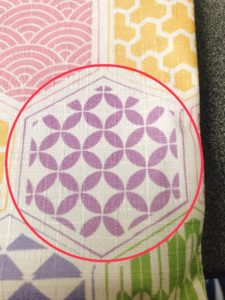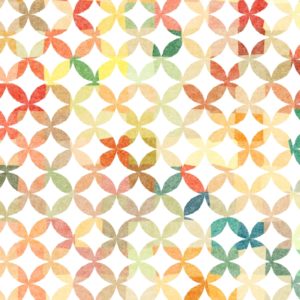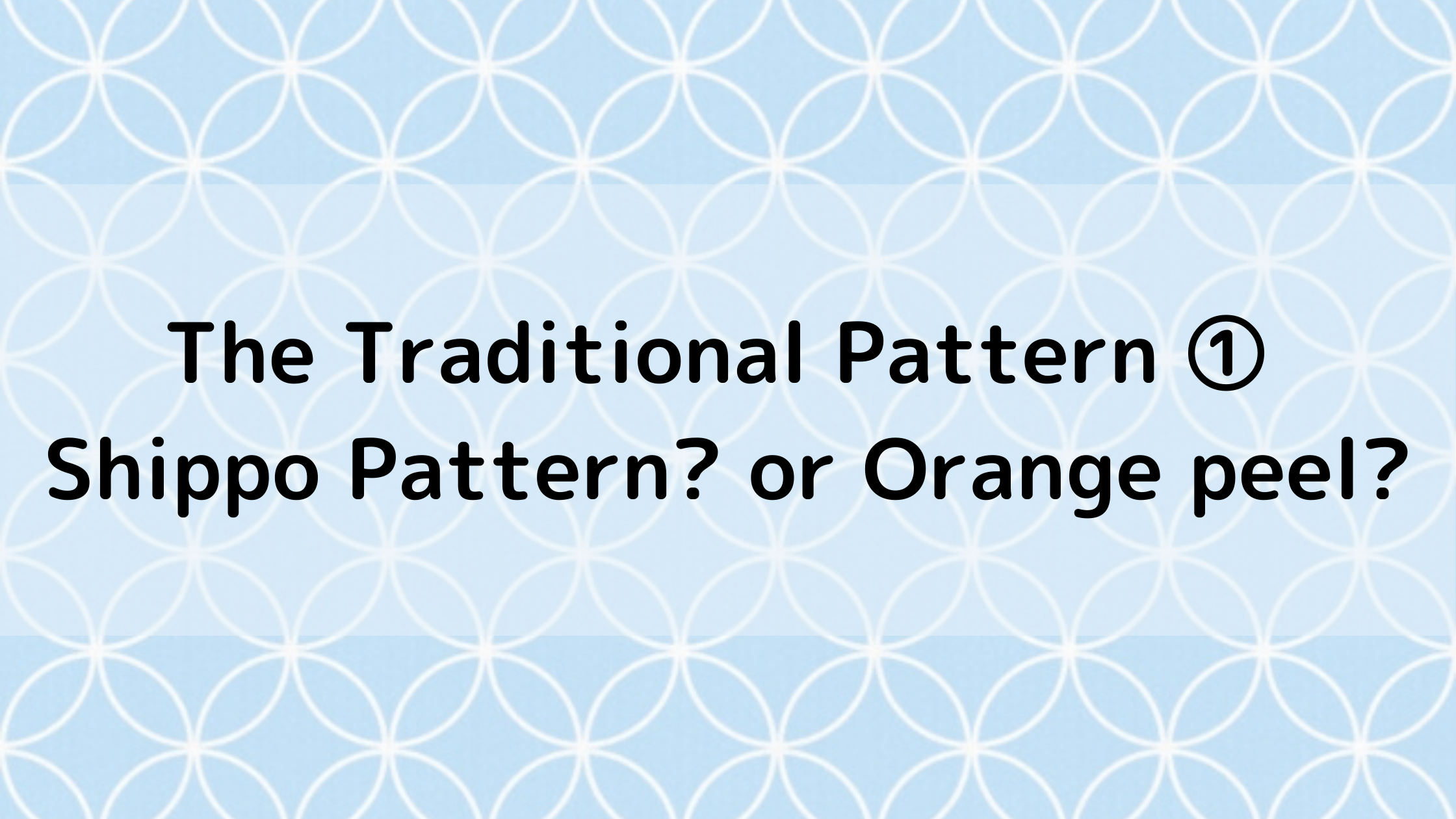From the Japanese standpoint of orange peel pattern.

→The pattern of overlapping circles and ovals of the same size in quarters is called “Shippo mon”, and this pattern of a regular succession of patterns on the left-right and up and down is called “Shippo Tsunagi”. It translated as Cloisonne. And it is known as the “Orange peel” pattern.
It is a congratulatory pattern that represents “happiness, wealth, prosperity, and unbroken relationships” because the circles look like forever linked in a chain. It is also said to indicate that a person’s relationship and connection with others is as valuable as the seven treasures.
What is “Shippo”?
It’s a Buddhist term that means the “seven treasures” below.
1.金(Kon): Gold
2.銀(Gon): Silver
3.瑠璃(Ruri): Lapis Lazuli, Blue Ball
4.玻璃(Hari): Crystal
5.硨磲(Shako): Beautiful shells representing the giant clam
6.珊瑚(Sango): In the Lotus Sutra, it’s not coral, it’s pearl
7.瑪瑙(Menou): Striped stone, agate, and agat.
This Shippo Tsunagi (cloisonne connection) may also be painted with gradients and many colors like below.

There are other theories such as…
1. “8” and “9” are read as “ya” and “ku”, and the “7” in-between is not “yaku”. Yaku means evil or misfortune in the Japanese ward.
2. When Kobo-Daishi (Kukai) set out on his journey, he is said to have worn seven-colored items to avoid difficulties.
3. The theory that the seven colors represent the seven gods of good fortune.
How was the difference between the shippo pattern and the orange peel pattern?
We will introduce other traditional patterns of kimonos!!



Comment